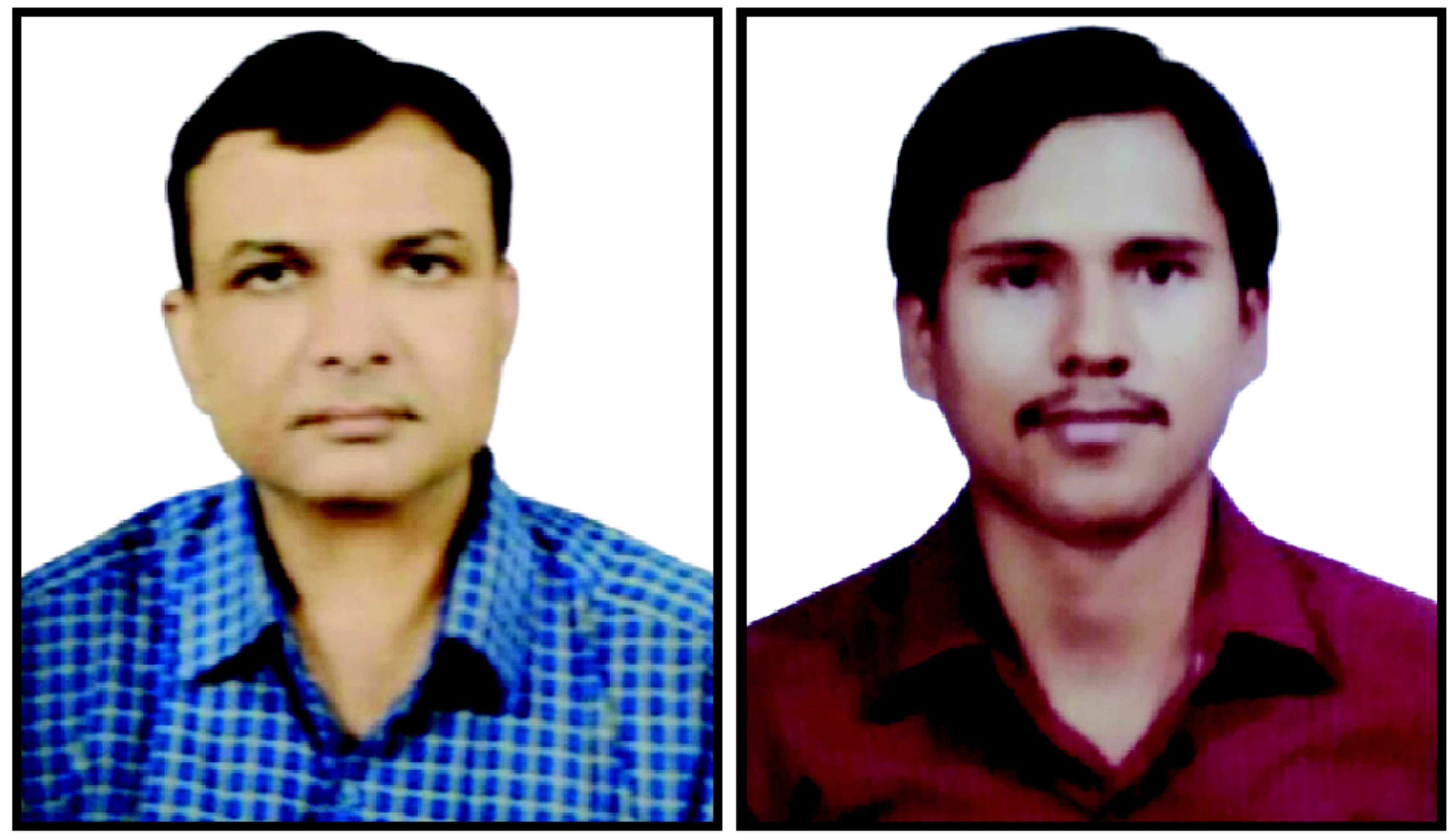- Call Us: +91 9425210308
- Email Us: amoghvarta@gmail.com
- RNI : CHHBIL/2021/80395
- ISSN : 2583-3189 (Online), 2583-0775 (Print)
Archieved Data
Publishing Year : 2025
Read Abstract
Emotional intelligence (EI) plays a crucial role in career development, influencing decision-making, leadership, teamwork, and stress management. This paper explores the significance of EI in career making, detailing its core components, including self-awareness, self-regulation, motivation, empathy, and social skills. It examines how EI contributes to professional success by enhancing communication, leadership abilities, and adaptability in the workplace. Further, the paper highlights the importance of emotional intelligence in various career stages and industries, offering strategies for improving EI to foster career growth. The role of EI in conflict resolution, networking, and personal branding is also discussed, supported by empirical evidence and real-world applications. Finally, the article underscores the necessity of integrating EI into career planning for long-term success.
Read Keyword
Emotional Intelligence, Career Development, Communication, Self-awareness, Motivation, Professional Growth.
Read Reference
1. Boyatzis, R. E.; Goleman, D.; & Rhee, K. (2000) Clustering Competence in Emotional Intelligence: Insights from the Emotional Competence Inventory (ECI), Consortium for Research on Emotional Intelligence in Organizations (CREIO), Rutgers University, The State University of New Jersey, New Brunswick, USA
Read Abstract
The victim compensation Scheme is a Government-funded program designed to provide financial assistance to victims of crime, helping them recover from the physical, emotional, and financial trauma inflicted upon them. This scheme aims to promote justice, rehabilitation, and reparation for victims, while also acknowledging the state's responsibility towards its citizens. The scheme typically covers expenses such as medical treatment, counseling, and loss of income, among others. By providing timely and adequate compensation, the scheme seeks to alleviate the suffering of victims and their families, facilitating their reintegration into society. This abstract provides an overview of the Victim Compensation Scheme, highlighting its objectives, eligibility criteria, benefits, and implementation mechanisms. This paper highlights the various laws on Victim compensation scheme.
Read Keyword
Victim, Compensation, Laws, Rehabilitation.
Read Reference
Read Abstract
Shashi Deshpande (1938) is known to the literary circle of the world as a feminist writer. She mainly deals with the issues of women in Indian society. The research paper focuses on two novels of Deshpande namely The Dark Holds No Terrors (1983) and That Long Silence (1988). It contemplates on the social issues related and impacted the life of women characters in the novels. The numerous and varied social issues include gender discrimination, gender based violence, gender inequality, economic empowerment, stereotyping, wife battering, widowhood, etc. The research article is quite helpful to understand the concept of social issue and women protagonists’ and some other minor characters’ situation discernible in the novels. There is a possibility without doubt that social problems may change in the due course of time. A social problem which is not considered in the past may be called so in present situation. On the other hand any social issue which was prevalent in the past may not be so in the present. Deshpande, through her writings, points to the need of creating awareness regarding social issues in general and women’s issues in particular.
Read Keyword
Shashi Deshpande, The Dark Holds No Terrors, That Long Silence, Women, Feminism, Social Issues.
Read Reference
1. Ahuja, Ram (2014) Social Problems in India, Rawat Publications, Jaipur.
Read Abstract
भारतीय अर्थव्यवस्था का मूल आधार कृषि है। गांवों में निहित संसाधन एवं आधारभूत संरचना, कृषि एवं पूरक व्यवसाय पशुपालन को संबल प्रदान करती है। छत्तीसगढ़ में कुल 150 लाख पशुधन है, किंतु उचित प्रबंध एवं गुणवत्ता में अभाव के कारण पशुपालन घाटे का व्यवसाय सिद्ध हो रहा है। छत्तीसगढ़ में पशुपालन व्यवसाय को लाभप्रद बनाने के लिए सुराजी गांव योजना अंतर्गत गरूवा (पशुधन) योजना आरंभ की गयी है। अध्ययन में पाया गया कि जिस गांव में मॉडल गौठान का निर्माण किया गया है, वहां गौठान योजना लाभप्रद है। किसान इस योजना से प्रसन्न है, किंतु अधिकांश गांवो में गौठान निर्माण अपर्याप्त संरचना के कारण योजना का लाभ अत्यंत सीमित है।
Read Keyword
गरूवा, नरवा, धुरवा, गौठान, सुराजी गांव.
Read Reference
1. गढ़बो नवा छत्तीसगढ़, सुराजी गांव योजना, मार्गदर्शिका सुराजी गांव प्रकोष्ठ, छत्तीसगढ़ शासन।
Read Abstract
Growth in e-commerce in India has also resulted in huge shifts in the consumer behaviour patterns in various two-tiers. The current paper brings a comparative insight into trends in online buying patterns in metropolitan (Tier 1) cities versus Tier 2 cities through secondary data sourced from Red Seer, Statista, RBI reports, Amazon India insights, and scholarly journals. Consumer attitudes, frequency of buying, and category of product are analysed through this study. Results show that while metro consumers value convenience, brand loyalty, and online payment modes, Tier 2 consumers are price-conscious and have a strong bias for cash-on-delivery services. The report also identifies the increasing influence of social commerce and vernacular language platforms in driving purchases in Tier 2 markets.
Read Keyword
Consumer Behaviour, Online Shopping, E-commerce, Metro Cities, Tier 2 Cities, Purchase Frequency.
Read Reference
1. Amazon India. (2023) E-commerce trends and digital payment adoption in metropolitan areas, Amazon India Consumer Trends Report, Retrieved from https://www.amazon.in, Accessed on October 04, 2025.
Read Abstract
व्यावसायिक तनाव विभिन्न स्रोतों से उत्पन्न होता है, जिसमें उच्च नौकरी की मांग, कम नौकरी नियंत्रण और सामाजिक समर्थन की कमी शामिल है। नौकरी की मांग-नियंत्रण- समर्थन मॉडल और प्रयास-इनाम असंतुलन मॉडल इन तनावों को समझने के लिए व्यापक रूप से उपयोग किए जाने वाले ढांचे हैं। व्यावसायिक तनाव कर्मचारियों और नियोक्ताओं दोनों के लिए एक महत्वपूर्ण चिंता का विषय है, जो मानसिक और शारीरिक स्वास्थ्य, नौकरी से संतुष्टि और संगठनात्मक दक्षता को प्रभावित करता है। प्रस्तुत शोधपत्र व्यावसायिक तनाव पर शीर्ष 50 वार्षिक और आजीवन उद्धृत लेखों की समीक्षा करता है, उन्हें एटियोलॉजी, भविष्यवाणियों, प्रबंधन, सिद्धांतों और कार्यप्रणाली के आधार पर वर्गीकृत करता है। समीक्षा अन्य कारकों के पूर्वानुमान या परिणाम के रूप में तनाव की व्यापकता पर प्रकाश डालती है और कार्यस्थल में प्रभावी तनाव प्रबंधन रणनीतियों की आवश्यकता को रेखांकित करती है।
Read Keyword
व्यावसायिक तनाव, नौकरी, नौकरी पर नियंत्रण, सामाजिक समर्थन, तनाव प्रबंधन, मानसिक स्वास्थ्य.
Read Reference
1. Behdin Nowrouzi, phD, ot reg. (ont.), christine Nguyen, BSc , Jennifer casole, MSed ,And Behnam Nowrouzi-kia, MpH (2017) Occupational Stress,A Comprehensive Review of the Top 50 annual and Lifetime Cited Articles, vol. 65, issue no. 5, 197 Workplace Healt H & Safety 2017.
Read Abstract
प्रस्तुत शोध उच्चतर माध्यमिक विद्यालय के विद्यार्थियों के माता-पाल्य संबंध का तुलनात्मक अध्ययन हेतु किया गया है। अध्ययन हेतु दुर्ग जिले के उच्चतर माध्यमिक विद्यालयों के 100 विद्यार्थियों (50 छात्र एवं 50 छात्राऐं) का चयन गैर आनुपातिक स्तरीकृत यादृच्छिक विधि द्वारा किया गया है। प्रस्तुत शोध में सर्वेक्षण विधि का प्रयोग उसके उद्देश्यों एवं विशेषताओं को ध्यान में रखकर किया गया है। शोध अध्ययन में आंकड़ों के संग्रहण हेतु साहू एवं सिंह (2019) द्वारा निर्मित माता-पाल्य संबंध मापनी का प्रयोग किया गया है। आंकड़ों के मापन हेतु टी-मूल्य सांख्यिकीय विश्लेषण का प्रयोग किया गया है। शोध के निष्कर्ष में यह पाया गया कि उपरोक्त सांख्यिकीय विश्लेषण के आधार पर यह निष्कर्ष पाया गया कि लिंग के आधार पर विद्यार्थियों के माता-पाल्य संबंध के मध्य सार्थक अंतर पाया गया तथा क्षेत्र के आधार विद्यार्थियों के माता-पाल्य संबंध के मध्य सार्थक अंतर नहीं पाया गया।
Read Keyword
उच्चतर माध्यमिक विद्यालय, माता-पाल्य संबंध, विद्यार्थियों.
Read Reference
1. Almeida, A. (2022) Emotional availability in mother-child and father child interaction as predictors of child attachment representations in adoptive families, International Journal Environment Research Public Health, 19(8), 4720.
Read Abstract
विश्व सैन्य इतिहास का विश्लेषण करने पर यह स्पष्ट होता है कि जब से सेनाऐं अपने आधुनिकीकरण के चलते यंत्रीक्रंत और मशीनीक्रत हुई है तब से सेनाऐ इन मशीनांे को चलाने हेतु उर्जा के प्रमुख स्त्रोत कच्चे तेल पर निर्भर हो गए है और यह सर्वाधिक महत्वपूर्ण है कि समस्त विश्व का 90 प्रतिशत कच्चा तेल पश्चिम एशियाई क्षेत्र जिसे मध्य पूर्व या खाड़ी क्षेत्र के नाम से भी जाना जाता है, मंे पाया जाता है। परिणाम स्वरूप समस्त विश्व के लिए पश्चिम एशिया सर्वाधिक महत्वपूर्ण हो गया है। वर्तमान समय मे विश्व में प्रचलित तीनो प्रमुख धर्म ईसाई, मुस्लिम,हिन्दु धर्म का उद्वव केन्द्र होने के साथ-साथ यहुदी धर्म का जन्म स्थल होने के कारण समस्त विश्व की राजनीति को प्रत्यक्ष रूप से प्रभावित करता है। पश्चिम एशिया का महत्व बाईबल और कुरान दोनांे के साथ-साथ विभिन्न हिन्दी साहित्य में भी मिला है। वस्तुतः पश्चिम एशिया, अफ्रीका और एशिया महाद्वीपों को जोड़ने वाले महत्वपूर्ण सेतु के भांति भी कार्य करता है। मौसम एवं जलवायु की विविधता भी यहां इतनी अधिक है कि जहां एक ओर सबसे अधिक गर्म इलाके तथा काफी हद तक ठन्डे क्षेत्र भी इसके अंर्तगत आते हैं।
Read Keyword
पश्चिम एशिया, भू-सामरिकी, कालासागर, फारस की खाडी, मध्य पूर्व.
Read Reference
1. Ahmad, Talmiz (2005) “Geopolitics of oil”, Symposium on oil, November, htttp://www. Indiaseminar,com/2005/555.html, Accessed on 10/09/2024.
Read Abstract
प्रस्तुत शोध पत्र का विषय ‘‘छात्रावास एवं पारिवारिक वातावरण में रहकर अध्ययनरत बालिकाओं पर सोशल मीडिया के प्रभाव का तुलनात्मक अध्ययन’’ है। यह शोध इसलिए महत्वपूर्ण है क्योंकि यह समझने का प्रयास करेगा कि छात्रावास और पारिवारिक वातावरण में अध्ययनरत बालिकाओं पर सोशल मीडिया के प्रभाव में क्या भिन्नताएँ हैं। इस शोध से प्राप्त निष्कर्षों के आधार पर छात्रों, शिक्षकों और माता-पिता को उचित दिशा-निर्देश दिए जा सकते हैं, जिससे सोशल मीडिया का संतुलित उपयोग किया जा सके। प्रस्तुत शोध हेतु शोधार्थी द्वारा सर्वेक्षण विधि का उपयोग करते हुए मध्यप्रदेश के ग्वालियर जिले की 200 बालिकाओं (100 छात्रावास और 100 पारिवारिक वातावरण में रहने वाली बालिकाओं) का अध्ययन किया गया। बालिकाओं से सोशल मीडिया के तथ्य संग्रहण हेतु स्व-निर्मित प्रश्नावली का निर्माण किया गया। निष्कर्ष रूप में पाया गया कि छात्रावास में रहने वाली छात्राएँ सोशल मीडिया का अधिक उपयोग करती हैं क्योंकि वहाँ माता-पिता का नियंत्रण कम होता है और सहपाठियों का प्रभाव अधिक होता है। पारिवारिक वातावरण में रहकर अध्ययन करने वाली छात्राओं का सोशल मीडिया उपयोग अपेक्षाकृत कम होता है क्योंकि वहाँ माता-पिता का मार्गदर्शन अधिक होता है।
Read Keyword
छात्रावास, पारिवारिक वातावरण एवं सोशल मीडिया.
Read Reference
1. चौहान, कविता (2022) महिला शिक्षा और आधुनिक तकनीक, मध्यप्रदेश ग्रंथ अकादमी, भोपाल।
Read Abstract
प्रस्तुत शोधपत्र छत्तीसगढ़ के रायपुर संभाग में कोविड-19 की स्थिति के दौरान और उसके बाद स्व-सहायता समूहों के विस्तृत प्रभाव का वर्णन करता है। यह अध्ययन देश भर में और देश के भीतर संदर्भगत अंतरों से संबंधित संभावित अवसरों और चुनौतियों की जांच करता है। कोविड-19 की स्थिति में आजीविका सहायता और आय सृजन के अवसर प्रदान करके अपने सदस्यों को सशक्त बनाने में स्व-सहायता समूहो का महत्वपूर्ण योगदान हैं। कोविड-19 की स्थिति में स्व-सहायता समूहों ने बहुत महत्वपूर्ण भूमिका निभाई है क्योंकि आधे स्व-सहायता समूह अपने समुदायों में सामुदायिक जागरूकता और संक्रमण की रोकथाम गतिविधियों में शामिल हैं। अध्ययन संभावित तंत्र की पहचान करता है जिसके द्वारा महिला समूह कोविड-19 की स्थिति से प्रभावित होते हैं।
Read Keyword
कोविड-19, स्व-सहायता समूह, सामाजिक विकास, स्थानीय समुदाय.
Read Reference
1. Balagobei, S.; & Aravinthakumar, S. (2019) Impact of Microcredit on Living Standard of Dairy Entrepreneurs: Special Focus on Oddusuddan DS Division in Mullaitivu District, Indian Journal of Finance and Banking, 3(2), 43-48. https://doi.org/10.46281/ijfb.v3i2.456
Read Abstract
Creative expression means the ability to use imagination to create something that represents our inner feelings and thoughts .It inspires authors to use their imagination to bring new and unique touch and flair to their works. By combining imagination and emotion, it helps individuals find a better outlook on their past experiences, trauma and other blockages. Authors are using creative expression since ages to create their new world and make new plots and characters. J.K.Rowling is one such author. Her Harry Potter Universe is an epitome of creative expression. She created a whole new Wizarding world full of spells, mythical creatures, magic, wizard and witches. Rowling’s description of Hogwarts, King’s Cross Station, Gringotts, The Leaky Cauldron, Grimmauld Place, The Three Broomstick, Diagon Alley and many more places depicts a whole new world of magic before reader’s eyes. Similarly mythical creatures like Basilisk, Centaur, Dragon, Werewolf, Chimaera, Unicorn, Dementor, Griffin demonstrates Rowling’s knowledge and grip on mythology. She also has invented spells to give us the feel of real magic like- Avada Kedavra, Alhomara, Expelliarmus, Expecto Patronum, Lumous, Sectumsempra and so more. These spells take readers to the realm of magic giving them the experience of real magical world. Rowling has done a marvelous job in the creation of a new world that is known as “Potterverse” in the popular culture. My contention would be to explore Rowling’s creative expression in the making of Potterverse and its culmination into a worldwide franchise.
Read Keyword
Creative Expression, Potter verse, Magic, Mythology, Wizard, Imagination.
Read Reference
1. Barbon, David; and Mary, Hamilton (2011) Exploring the Potential of Digital Literacies, Research in the Teaching of English, vol. 45, no.3, p.264-286.
Read Abstract
Emerging markets present a compelling investment opportunity due to their potential for high returns, driven by rapid economic growth, youthful demographics, and increasing integration into the global economy. However, these opportunities come with heightened risks, including political instability, currency fluctuations, and market volatility.Investing in emerging markets offers the potential for high returns and portfolio diversification. However, it is crucial to conduct thorough research and consider the specific risks associated with these markets. Consulting with a financial advisor can help tailor investment strategies to individual risk tolerance and investment goals.Emerging markets often experience faster economic growth compared to developed economies, offering investors the potential for higher returns. For instance, the MSCI Emerging Markets Index has historically outperformed the MSCI World Index, reflecting the robust growth in these regions.
Read Keyword
Economic Growth, Diversification, Risks, Sector Opportunities.
Read Reference
1. Abor, J., & Bokpin, G. A. (2010) Investment opportunities, corporate finance, and dividend payout policy: Evidence from emerging markets, Studies in economics and finance, 27(3), 180-194.
Read Abstract
The rise of digital finance has changed the global financial system, bringing both opportunities and challenges for tax compliance. This paper examines how digital finance affects tax systems around the world, focusing on compliance methods, policy responses, and the role of technology. It highlights that while digital finance can improve transparency, it also creates risks by allowing tax evasion through digital loopholes. The study concludes with recommendations for policymakers to use digital finance effectively while addressing its risks.
Read Keyword
Digital Finance, Tax System, Tax Evasion, Technology.
Read Reference
1. European Commission (2023) DAC7 Directive Overview.
Read Abstract
Many evils entered the ancient Indian Vedic religion from the Rig Vedic period to the Mahajanapada period, which had a negative impact on society, politics, religion and especially the economy. For example: Due to the increasing importance of Yagya in a large scale, economic pressure had increase on the common man, taxes and other methods were given religious basis to extract money from the common man and animal sacrifice was encouraged, which put a negative pressure on the agricultural economy. In such a situation, the common people needed a religion that was simple to follow, easy to follow and affordable and cheaper than other religions. The rise of Buddhism provided this option to the common people. Buddhism developed and spread throughout the Ganga valley. Its principles, ideas and religious activities created an economic environment in the Ganga valley which encouraged economic activities. Such as: - opposition to animal sacrifice and yajna, lending money on interest and supporting business activities and the suitability of the urban environment. This article describes the economic impact of Buddhist activities on the Ganga Valley. Buddhism had a positive impact on the economic policies of kings in different periods and on the economic environment of the Ganga Valley region such as agriculture, markets, trade, commerce, crafts and industry.
Read Keyword
River Ganga Valley, Economics, Buddhism, Vedic, Mahajanpada, Mouryan.
Read Reference
1. Bapat, P. V. (2012) 2500 years of Buddhism, M/O information and broadcasting, Delhi.
Read Abstract
This article brings ecological studies into a dialogue with postcolonial studies. By examining Amitav Ghosh’s The Hungry Tide and South Asian literatures, it tries to depict the relationship between human and nature. This article also makes a compelling argument for a more global or universal approach to think about our present environmental crisis. Amitav Ghosh is such a writer who is very much conscious about ecological issues. The way he depicts landscapes in his novels and relates them to human activities is worthy to discuss in detail. In the novel, The Hungry Tide Amitav Ghosh has beautifully shown his concern about landscapes and postcolonial ecologies. Ghosh tries to discuss the relationship between people and nature, people and animals etc. Climate change, Government policies and western outlook towards environmental changes are major concerns for him. His outlook towards nature is very positive and he raises many serious concerns about upcoming catastrophe because of the unbalance in ecology. This novel is an intense and memorable novel expected only from a writer of this stature. This novel is a mystery novel which is very close to the Bengali tradition of the river novel. The landscapes of the Sundarbans which is a huge group of islands located at the southernmost tip of West Bengal has picture postcard realism. We find beautiful animals like tigers, crocodiles, dolphins and many marine mammals. Indigenous people around this ecology are very much attached to all these thing
Read Keyword
Landscapes, Ecology, Sunderbans.
Read Reference
Read Abstract
Research validity and reliability are fundamental concepts that shape the quality and credibility of scientific inquiries. They play an essential role in ensuring that research findings are accurate, generalizable, and meaningful. This abstract aims to provide an overview of the significance, types, and methods used to assess validity and reliability in research, with a focus on their implications for both qualitative and quantitative studies. The importance of these two criteria in establishing trustworthiness and reproducibility in research will be discussed, with an emphasis on how they contribute to the overall rigor of scholarly work.
Read Keyword
Generalizable, Reliability, Credibility, Validity, Reproductability.
Read Reference
1. Chawla, Deepak (2016) Research methodology concepts and cases, Vikas publications, Chandigarh.
Read Abstract
सिक्कों का प्राचीन भारत के इतिहास के स्रोत के रूप में महत्वपूर्ण स्थान है। हमारे पूर्वज जाने-अनजाने में ही इन सिक्कों के माध्यम से हमारे लिये जानकारी के महत्वपूर्ण स्रोत छोड़ गए जिससे वर्तमान समय में अतीत की बहुत सारी जानकारी प्राप्त होती है। सिक्कों में प्रयुक्त धातु, सिक्कों का तौल, सिक्कों पर उत्कीर्ण लिपि आदि से इतिहास की महत्वपूर्ण जानकारी प्राप्त होती है। सिक्कों से अतीत काल के राजनीतिक स्थिति का ज्ञान प्रमुखता से होता है। सबसे प्रथम किस वंश के राजा द्वारा जारी किया गया, जारी करने वाला राजा और उसके सिहासनरूढ़ होने की तिथि के बारे में जानकारी प्राप्त होती है। प्राचीन भारत के इतिहास के कालक्रम को प्रमाणिक बनाने में सिक्कों की महत्वपूर्ण भूमिका रही है। सिक्कों पर अनेक देवी-देवताओं या धर्म से संबंधित प्रतीक चिन्ह बने हुए है इससे उस काल के धार्मिक अवस्था की जानकारी मिलती है। सिक्कों से उस काल की मौद्रिक व्यवस्था के बारे मे जानकारी प्राप्त होती है जिस काल में बड़ी संख्या में मुद्राएँ जारी की गयी हो। इससे उस काल की आर्थिक समृद्धि का पता चलता है साथ ही सिक्कों में प्रयुक्त धातुएँ भी आर्थिकता का परिचायक होती है। सिक्कों के प्राप्ति स्थान से किसी काल की भौगोलिक सीमा रेखा तय करने में मदद करती है। इस प्रकार सिक्कों से विविध प्रकार की बातों का ज्ञान होता है जो इतिहास के बहुमूल्य स्रोत है। सिक्को का विकास मानव जीवन की महत्वपूर्ण उपलब्धियों में से एक था। इसके माध्यम से लेन-देन की प्रक्रिया आसान हुई और व्यापार वाणिज्य का भी विकास तीव्र गति से होना प्रारम्भ हुआ। नवपाषाण काल तक लेन-देन वस्तु विनिमय के आधार पर होता था। हड़प्पा वासियों ने भी वस्तु विनिमय प्रणाली और मुहरों के प्रयोग से व्यापार खडा किया था। वैदिक काल से सिक्कों के प्रारंभिक स्वरुप का आभास होता है। ऋग्वेद में निष्क, पाद शतमान, हिरण्यपिण्ड जैसे शब्दों का उल्लेख मिलता है। ये कोई सिक्का नही था अपितु निश्चित तौल की वस्तुएँ थी जिसका प्रयोग लेन-देन में होता था। भारतीय उपमहादीप में सिक्कों का प्रयोग छठी सदी ई. पू. से मिलने लगता है। भारत के इन प्राचीन सिक्कों को ’आहत’ या ’कार्षापण’ कहा जाता था। इन सिक्कों पर कुछ लिखा हुआ नही है। ये चाँदी और ताम्बे के बने हुए हैं। इन पर ज्यामितिय आकार के चिन्ह बने हुए हैं। भारत मे यूनानियों के आगमन के बाद सिक्कों में महत्वपूर्ण परिवर्तन हुए। सर्वप्रथम लेख युक्त सिक्के इंडो-ग्रीक शासकों ने ही जारी किए। इन सिक्कों पर राजा का नाम, तिथि, उपाधियाँ एवं देवी देवताओं का अंकन होने लगा। बाद के काल मे भारतीय सिक्कों के निर्माण में यूनानियों का प्रभाव पड़ा और भारतीय सिक्के भी यूनानियों के अनुकरण पर जारी किये जाने लगे। इस प्रकार सिक्कों से विभिन्न कालों के बारे में विविध जानकारी प्राप्त होती है।
Read Keyword
वस्तु विनिमय, सिक्का, इतिहास, धातु, भाषा, कला.
Read Reference
1. सिंह, उपिन्दर (2018) प्राचीन एवं पूर्व मध्यकालीन भारत का इतिहास, पियर्सन, दिल्ली, पृ. 51-51।
Read Abstract
The fictional world of Arun Joshi, one of India’s foremost contemporary novelists, is a compelling exploration of the human psyche, existential dilemmas, and socio-cultural contexts. This critical appraisal delves into the thematic and stylistic aspects of Joshi’s works, highlighting his unique narrative voice and the philosophical underpinnings of his fiction. Joshi’s novels, including “The Strange Case of Billy Biswas,” “The Apprentice,” “The Foreigner,” and “The Last Labyrinth,” offer profound insights into the alienation and spiritual quest of individuals grappling with the complexities of modern life. His characters often find themselves at the crossroads of tradition and modernity, seeking meaning and identity in a rapidly changing world. Through meticulous character development and rich, symbolic imagery, Joshi addresses themes of isolation, existential angst, and the search for self-realization. This critical appraisal examines how Joshi’s portrayal of internal and external conflicts resonates with broader socio-cultural issues, such as the impact of colonialism, the fragmentation of cultural identity, and the quest for authenticity in an increasingly materialistic society. By situating Joshi’s works within the larger framework of Indian and global literature, this study sheds light on his enduring relevance and the universal appeal of his storytelling. Ultimately, this abstract provides a comprehensive overview of Arun Joshi’s fictional universe, emphasizing his contributions to literature and his profound understanding of the human condition. Joshi’s exploration of psychological and existential themes makes his work a significant and enduring part of literary discourse.
Read Keyword
Existential theme, Psychoanalysis of characters, Sense of alienation, Cultural Identity, Impact of Colonialism, Spiritual dilemma.
Read Reference
1. Abraham, Joy (1992) “The Foreigner: A study in Techniques”, The Novels of Arun Joshi, ed. R.K. Dhawan, Prestige Books, New Delhi.
Read Abstract
Agriculture has long been the backbone of the global economy, with over half India’s population relying on it for their livelihood and employment. Uttar Pradesh stands out in food grain production because of its fertile Gangetic plains, extensive canal irrigation, and Government and private tube wells. Social, economic, political, and technological factors influence crop production in the state. This study examines the Spatial and temporal trends of significant crops, including concentration and diversification in Ambedkar Nagar district for 2001, 2011, and 2021, to understand the changing relationship between land, humans, and the environment. Jasbir Singh’s method is used to calculate crop concentration, and the Gibbs and Martin method is used to assess crop diversification. The findings indicate increased rice, wheat, and pulses concentration while sugarcane cultivation has declined. Between 2001 and 2021, crop concentration and diversification in Ambedkar Nagar district show noticeable shifts. The district’s high crop concentration and diversification indices reflect that agriculture remains the main occupation and income source.
Read Keyword
Population, Agriculture, Economy, Environment.
Read Reference
1. Baghel, R.; Sharma, P. (2024) Evaluating agricultural activity dynamics over the Uttar Pradesh state of India using satellite-based datasets, Tropical Ecology, 65(3), 412-425.
Read Abstract
अनौपचारिक शिक्षा और वैकल्पिक माध्यम विषयक इस आलेख में अनौपचारिक शिक्षा के महत्व और इसके लिए वैकल्पिक मीडिया के उपयोग पर प्रकाश डाला गया है। अनौपचारिक शिक्षा वह प्रक्रिया है जो औपचारिक शिक्षा प्रणाली से बाहर होती है और व्यक्ति के अनुभवों, रुचियों और आवश्यकताओं के अनुसार लचीली होती है। इसकी प्रमुख विशेषताओं में नमनीयता, खुलापन और समावेशिता शामिल हैं। यह विशेष रूप से समाज के कमजोर और पिछड़े वर्गों के लिए एक सशक्त माध्यम है। सन् 1968 में फिलिप कूम्बस ने अनौपचारिक शिक्षा की अवधारणा प्रस्तुत की। यह प्रणाली व्यक्ति को सीखने की स्वतंत्रता देती है और समाज की जरूरतों के अनुसार शिक्षा प्रदान करती है। इसका उद्देश्य समाज में समानता और समावेशिता को बढ़ावा देना है। इसके उदाहरणों में खुले विद्यालय, पत्राचार पाठ्यक्रम और सामुदायिक शिक्षा कार्यक्रम शामिल हैं। वैकल्पिक मीडिया समाज के उन मुद्दों और वर्गों को सामने लाना है, जो अक्सर मुख्यधारा की मीडिया द्वारा उपेक्षित रहते हैं। वैकल्पिक मीडिया सामाजिक न्याय, लोकतांत्रिक मूल्यों और जनता की आवाज़ को सशक्त करता है। ऐतिहासिक दृष्टि से, यह श्रमिक आंदोलनों, स्वतंत्रता संग्राम और डिजिटल युग के माध्यम से विकसित हुआ है। भारत में, यह गांधी और अंबेडकर की पत्रकारिता से लेकर डिजिटल मीडिया प्लेटफार्मों तक विभिन्न रूपों में प्रकट हुआ है। वैकल्पिक मीडिया की प्रासंगिकता डिजिटल युग में बढ़ गई है। इंटरनेट और सोशल मीडिया ने इसे एक नई दिशा दी है, जिससे सूचना का लोकतंत्रीकरण हुआ है। यह समाज के वंचित वर्गों के मुद्दों को उजागर करता है और उन्हें सशक्त बनाने में मदद करता है। वैकल्पिक मीडिया अनौपचारिक शिक्षा के प्रसार में एक प्रभावी माध्यम है। यह समाज में सकारात्मक परिवर्तन और शिक्षा के व्यापक प्रसार के लिए एक मजबूत मंच प्रदान करता है।
Read Keyword
अनौपचारिक शिक्षा, वैकल्पिक मीडिया, लोकतांत्रिक मूल्य, सामाजिक न्याय, डिजिटल युग, सूचना लोकतंत्रीकरण.
Read Reference
1. विद्यार्थी, रामशंकर (शुक्रवार, 7 जुलाई 2017) वैकल्पिक मीडियाः अर्थ एवं अवधारणा, विद्यार्थी ब्लॉग,https://reeta-yashvantblog.blogspot.in, से, सोमवार 20 नवंबर 2017 को पुनर्प्राप्त.
Read Abstract
Wetland is water body which develops local ecological atmosphere in their surroundings.The Sultanpur city’s wetland ecology is severely degrading due to numerous biological and anthropogenic influences, as indicated by numerous studies. Thus, conflict between development and ecology and its recurrent impact on the larger society is becoming evident here every day. The water quality related data has been produced by collecting sample from Dadupur wetland site. The sampled water has been tested and its values have been collected as data for assessment of pollution level and water quality. The collected data have been analysed using a variety of statistical analysis and representation software programs, including SPSS and Xlstat 2010. We used multivariate statistics to provide an overview of Sultanpur city wetlands’ current immunological state. Dadupur wetland is both perennial and rainwater fed, with a water regime depth of 7 feet during the non-monsoon season and 21 feet during the 2023 monsoon. People who live nearby use this marsh for agriculture, fishing, waste water disposal and as a dump yard. The most significant pollutants observed in the present study are Total Alkalinity, Chloride, Fluorides, Nitrates, Total Dissolved Solids and Electrical Conductivity. Dadupur wetland are experiencing a water area crisis due to wetland shrinkage as a result of water scarcity, non-dredging, and public ignorance of wetlands.
Read Keyword
Sultanpur City, Dadupur Wetland, Water Quality, Encroachment, Shrinkage.
Read Reference
1. Bhatnagar, A.; & Devi, P. (2013) Water quality guidelines for the management of pond fish culture, International journal of environmental sciences, 3(6), 1980-2009.
Read Abstract
Women’s Self-Help Groups have been working across India to help women escape poverty and become financially independent. These groups provide women with access to savings and loans tailored to their needs, freeing them from relying on local money lenders.The groups are made up of poor rural women who use the loans to cover basic needs and start businesses, improving their economic status and well-being.This study examines how Information and Communication Technology (ICT) can improve the efficiency of Self-Help Groups (SHGs) in Jharkhand. The research was conducted in areas of Bokaro District in Jharkhand state, and aims to understand the potential benefits, limitations, and role of ICT in enhancing SHG activities. This research paper aims to investigate how the use of Information and Communication Technology (ICT) can improve the effectiveness of Self-Help Groups (SHGs) of Bokaro district of Jharkhandin India.
Read Keyword
Self-Help Groups, Economic Status, Information and Communication Technology (ICT), Women Development.
Read Reference
1. Chakravarty, S.; Kumar, A.;; & Jha, A. N. (2013) Women’s Empowerment in India: Issues, Challenges and Future Directions, International Review of Social Sciences & Humanities, 5(1), 24-32.
Read Abstract
Indian drama in English is gaining ground by leaps and bounds. The dramatists like Girish Karnad, Mahesh Dattani, Vijay Tendulkar, Badal Sarkar, Mohan Rakesh and a host of other great writers have tried their best to upgrade the Indian dramas with the help of their great contributions by composing some immortal works full of beauty and truth. The works of Vijay Tendulkar and Mahesh Dattani are very much rooted to the problems of society. In each and every work, these writers have tried their best to present the society as a whole with the help of their imaginative frame of mind and some poetic devices which matter most to the lovers of drama and literature. Almost all the plays of these two writers deal with some social issues of modern time. Like G. B. Shaw, both the playwrights want to root out the evils of the society so that the world can become paradise and the man can become Superman. In the works of Mahesh Dattani, we often see some untouched issues of the society like the problems of third gender, gay themes and feminine sensibility. Similarly the works of Vijay Tendulkar dwell on the themes of women empowerment, gender identity, personal relationship, untouchability and the marginalized issues, so on and so forth.
Read Keyword
Women empowerment, Gender identity, Personal relationship, Historical perspectives, Gay literature.
Read Reference
1. Adarkar, Priya (1974) Vijay Tendulkar’s Silence the Court is in Session, Five Plays, Oxford University press, p. VIII.
Read Abstract
वर्तमान शिक्षा में बच्चों के बस्तेे का बोझ एक गंभीर समस्या है, जो बच्चों के शारीरिक, मानसिक और बौद्धिक विकास पर नकारात्मक प्रभाव डालता है। बस्ताविहीन शाला बच्चों को उनके रोजमर्रा के शैक्षणिक कार्यों से हटाकर रचनात्मक और व्यावहारिक अनुभव प्रदान करने का एक अभिनव प्रयास है। इसका उद्देश्य बच्चों के मानसिक तनाव को कम करना और उनकी रचनात्मकता को प्रोत्साहित करना है। इस दिन बच्चे खेल, कला, कहानी सुनने और पर्यावरण आधारित गतिविधियोें में भाग लेते है, ताकि उनमें सांस्कृतिक, साहित्यिक एवं व्यावहारिक विषयों से संबंधित कौशलों का विकास हो सके। यह बच्चों को एक ऐसा मंच प्रदान करता है, जहाँ वे अपनी क्षमताओं का अन्वेषण कर सकते है। इसके अतिरिक्त यह न केवल उनके सीखने के अनुभव को रोचक बनाता है, बल्कि उन्हें जीवन कौशल भी सिखाता है। बस्ताविहीन शाला की यह अवधारणा बच्चों की समग्र शिक्षा के लिए एक सकारात्मक कदम है। इस लेख के माध्यम से बस्ताविहीन शाला की वर्तमान शिक्षा पद्धति में प्रासंगिकता को प्रमुखता से उभारने का प्रयास किया जा रहा है।
Read Keyword
शिक्षा, बस्ताविहीन शाला, नई क्रांति, नवाचारी शिक्षा, सृजनात्मकता.
Read Reference
1. ‘बैगलेस सुरक्षित शनिवार‘ वैगल व्हील. राज्य शिक्षा शोध एवं प्रशिक्षण परिषद्, बिहार. Retrieved from https://www.bepcssa.in/en/dt/Bagless%20Saturday%20Final%20copy%2010-11-22%209%20pm%20 white.pdf, Accessed on 27.10.2024.
Read Abstract
The New National Education Policy 2020 aims to create a unified vision and comprehensive framework for primary, secondary and higher education systems across the country. While education is a crucial aspect of the policy, its execution still depends on additional regulations from state and federal Governments. Nonetheless, if properly implemented, the NEP 2020 has the potential to enhance the workforce and improve the employability of job seekers. Several components of the NEP directly address employability issues. It is undeniable that an improved educational system enhances an individual’s prospects of securing employment. According to surveys, the majority of recent graduates report feeling inadequately prepared for their initial employment and frequently face the decision of whether to remain in or depart from their positions. First-year professionals are insufficiently equipped for the demands of the professional environment. One of the primary factors contributing to this phenomenon has been suboptimal educational preparation. The disparity between industry requirements and academic curricula has been a predominant topic of discussion among employers and job seekers. With the implementation of the new policy, educational institutions at both the secondary and tertiary levels will approach education as a means of fostering character development and facilitating comprehensive professional growth, rather than solely as a pathway to degree attainment.
Read Keyword
National Education Policy, Employability Skills, Vocational Education and Training, Artificial Intelligence, Future of Schools (FoW).
Read Reference
1. Cheng, M., Adekola, O., Albia, J., &Cai, S. (2022) Employability in higher education: a review of key stakeholders’ perspectives, Higher Education Evaluation and Development, 16(1), 16-31.

























